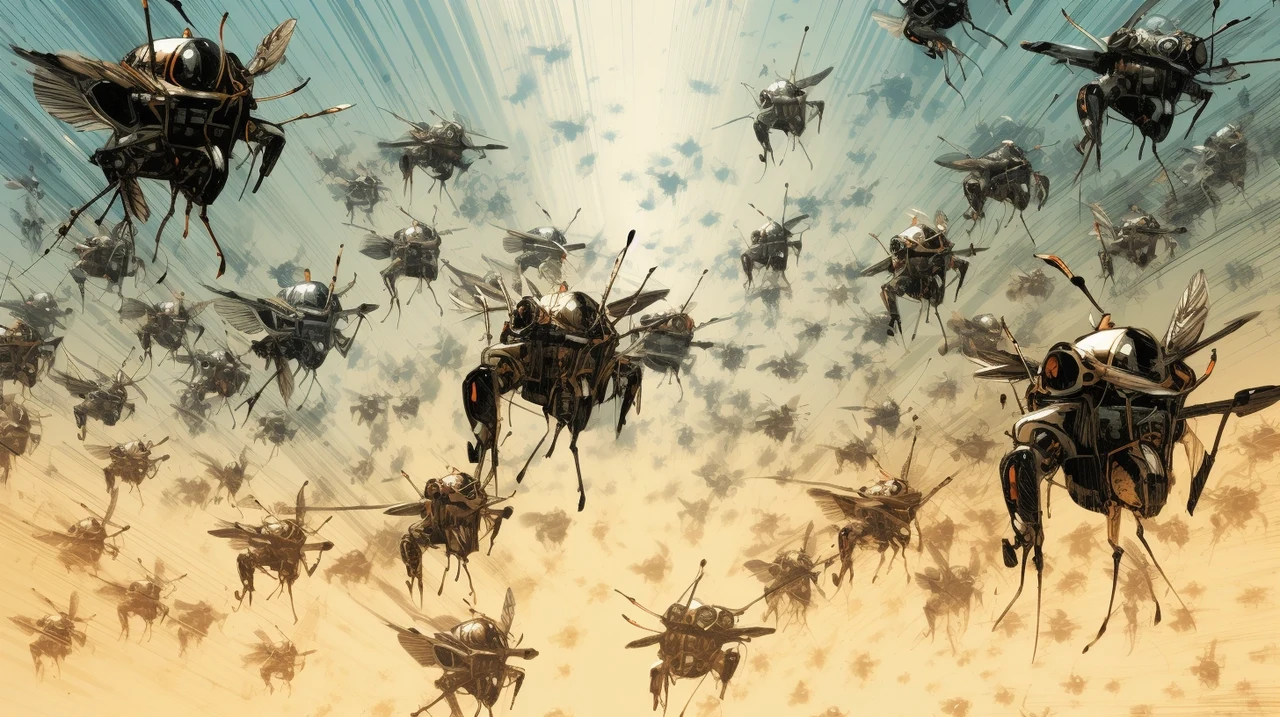In the ever-evolving world of technology, the drone industry is undergoing a significant transformation. The advent of intelligent drone swarms, morphing capabilities, and hybrid designs is setting the stage for a new era of advanced drone technologies. These innovations are not only enhancing the adaptability and efficiency of drones but also redefining their potential applications across various sectors.
At the forefront of this technological revolution is the development of intelligent drone swarms, powered by liquid neural networks. These networks are the backbone of drone communication and collaboration, amplifying their collective capabilities. This groundbreaking technology is a game-changer, enabling drones to work in harmony to accomplish tasks with increased efficiency and effectiveness.
Another exciting advancement in the drone technology landscape is the emergence of morphing drones. These drones have the unique ability to autonomously alter their shape to suit specific tasks, thereby enhancing their adaptability. The “Dragon drone” is a prime example of this technology, demonstrating the potential for drones with intricate, stabilized forms.
Drone swarm navigation using liquid neural networks
Other articles we have written that you may find of interest on the subject of artificial intelligence :
The drone industry’s evolution demonstrates a continuous push towards versatility and efficiency, adapting to diverse environments and tasks. Hybrid models like wheel-based multicopters represent a significant leap in this direction. Let’s delve into various aspects of these innovations:
Wheel-Based Multicopters
These drones, such as the “Skywalker” omnidirectional vehicle, combine the advantages of terrestrial and aerial mobility. Their ability to switch between driving and flying allows them to navigate complex environments more efficiently. The “Skywalker,” for instance, can transition between air and ground modes in real-time. This duality not only broadens the scope of applications but also enhances operational efficiency by over 70%.
VTOL with Fixed-Wing Designs
Combining Vertical Take-Off and Landing (VTOL) with fixed-wing aerodynamics, as seen in the “XP4” prototype, enhances the drone’s endurance and payload capacity. The fixed-wing design aids in achieving longer flight durations due to more efficient aerodynamics, while VTOL capabilities allow for flexibility in take-off and landing environments. This hybrid approach is particularly beneficial for large-format drones, opening up new possibilities for cargo delivery, surveillance, and other applications.
Hybrid Aquatic Drones
The “TJ Flying Fish” exemplifies the innovative approach of hybrid aquatic drones capable of functioning both in air and underwater. While these drones face limitations in terms of depth and operational duration underwater, they offer a unique blend of capabilities for marine research, underwater exploration, and other aquatic applications.
Drones with Perching Capabilities
Projects like the “Griffin” are exploring the potential of drones that can perch, using magnetic configurations for docking and surveillance purposes. This ability to perch and resume flight adds to the operational versatility, especially in prolonged surveillance tasks or in scenarios where recharging or remote operation is required.
The Challenge of Battery Life
The primary challenge across all these advancements remains the energy density of batteries. Efficient power management and propulsion are crucial for the practical deployment of these drones. Emerging solutions include:
Turbo Generators for Larger Drones
Turbo generators are being considered for larger drones due to their ability to generate consistent and high levels of power. These generators work by converting fuel into mechanical energy, which is then converted into electrical power. This approach is particularly suitable for larger drones, which often have higher power demands due to their size, payload capacity, and endurance requirements. The key advantage of turbo generators is their energy density compared to traditional batteries, allowing for extended operation times and heavier payloads. However, they do rely on liquid fuel, which brings considerations regarding fuel availability, environmental impact, and the need for refueling infrastructure.
Piezoelectric Propulsion for Lighter Drones
Piezoelectric propulsion represents a novel approach in the field of drone technology. Piezoelectric materials generate voltage when mechanically stressed and vice versa. In the context of drones, these materials can be used to create propulsion systems that are significantly quieter and potentially more energy-efficient than traditional electric motors. This technology is particularly promising for smaller drones, where noise reduction is crucial in applications like wildlife monitoring or operations in noise-sensitive urban areas. The main challenges lie in developing piezoelectric materials and designs that can provide sufficient thrust and endurance for practical use.
Maglev Hyperdrive Technology
Maglev (magnetic levitation) hyperdrive technology is an emerging concept that could revolutionize drone propulsion. This technology uses magnetic fields to create lift and propulsion, eliminating the need for traditional rotors or engines. The benefits of such a system include significantly reduced noise levels and increased energy efficiency, as magnetic levitation involves minimal friction.
This technology could make drones more suitable for a wide range of applications, including urban transportation, where noise and efficiency are critical concerns, and in discreet surveillance operations, where silent operation is key. However, challenges such as the control and stability of the drone during flight, and the development of lightweight yet powerful magnets, need to be addressed for this technology to become feasible for widespread use.
The future of drone technology is promising, with advancements in intelligent drone swarms, morphing capabilities, hybrid designs, and energy solutions. These innovations are poised to redefine the drone landscape, offering heightened versatility, efficiency, and adaptability. As these technologies continue to progress, we can anticipate drones playing an increasingly pivotal role in various sectors, from logistics and surveillance to environmental monitoring and beyond. The evolution and progression of advanced drone technologies are indeed revolutionizing the future.
Filed Under: Design News, Top News
Latest aboutworldnews Deals
Disclosure: Some of our articles include affiliate links. If you buy something through one of these links, aboutworldnews may earn an affiliate commission. Learn about our Disclosure Policy.







